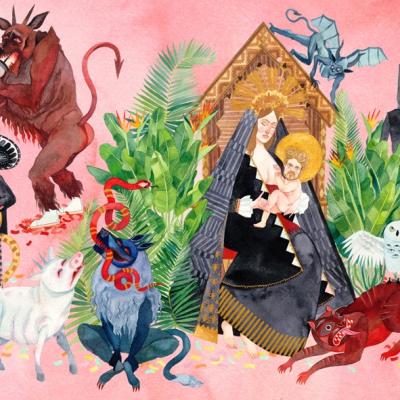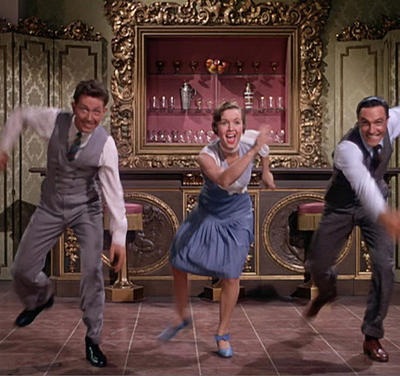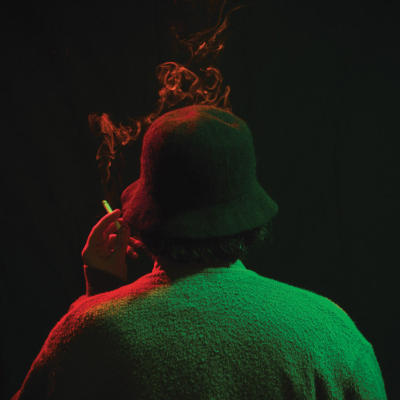Jazz luminary Ornette Coleman has died from cardiac arrest at 85. For a soul as strange and free-spirited as Coleman, it almost seems too tame an ending. You may be asking yourself who Ornette Coleman was and why he matters; he is widely considered the creator of the jazz genre called “free jazz.” More than just a joke from This is Spinal Tap, free jazz is a wild, almost feral, but profoundly spiritual form of jazz that throws many of the things we expect, not just from jazz, but from music, out the window. Rhythm, melody, keys, scales – depending on the bandleader, they don’t matter. Ornette Coleman led a vanguard of ground-breaking musicians whose influence can be felt even in contemporary indie rock music. Below, in Ornette Coleman's honour, are five sublime pieces that serve as prime examples of the jazz that they call free.
Ornette Coleman – “Congeniality” (1959)
Coleman’s first masterpiece , the portentously titled The Shape of Jazz to Come came out the same year as Miles Davis’ legendary Kind of Blue, the best-selling jazz album of all-time. In stark contrast to the studied elegance of Davis’s modal compositions, Coleman’s are fierce and unpredictable, by turns fiery and passionate, or withdrawn and sorrowful. The best example of this is “Congeniality,” one of Coleman’s finest pieces. The most immediately striking thing about it is that, like the rest of its parent album, it does not feature the grounding of a piano player, so the horn players (Coleman on alto sax, Don Cherry on cornet) are free to lift off into the stratosphere, buoyed by the unstoppable rhythm conjured by bassist Charlie Haden and drummer Billy Higgins. Coleman’s sax bleats, squeaks, squawks and squeals like every ounce of joy he’s ever felt is coming out his mouth and fingertips just so you can feel it too.
Eric Dolphy – “Out to Lunch” (1964)
The 12-minute title track of Eric Dolphy’s finest record erupts into your consciousness with a strident military beat. Tony Williams plays drums with more muscle than most other jazz drummers, not just setting the beat but contributing to the dynamics and texture of the song. The rest of the players do an incredible job of keeping up, though. Dolphy’s alto sax delivers some astonishing runs, continually moving forward as if he barely has time to think. For me, the MVP of Out to Lunch! will always be Bobby Hutcherson, whose contribution on vibraphone lends a steely flavour to each composition; the vibes float somewhere in the middle, between playing the role of rhythm and melody, almost as if Hutcherson wasn’t aware that there were other musicians in the room, and if that is not free then I don’t know what is.
John Coltrane – “Pursuance/Psalm” (1965)
John Coltrane’s magnum opus A Love Supreme ends with 17 minutes of incredible, spiritual catharsis. Coltrane’s saxophone playing has been described as “sheets of sound” and nowhere is this truer than on A Love Supreme. Opening with an extended solo from drummer Elvin Jones that tumbles like a rockslide, the song almost congeals from that, never losing the forward momentum. Coltrane plays the song’s melodic base quickly and almost carelessly, changing the phrasing with each iteration, but never losing focus of the piece’s direction. The real surprise comes with part two of the piece. “Psalm” is a slow, drifting counterpoint to the rush of “Pursuance” featuring rolling timpani and a searing, searching melody from Coltrane. It was actually his attempt to transpose a free-form poem into music, and if you listen closely, you can hear the words come through. “Thank you, God,” Coltrane shouts with his saxophone as a mouthpiece, and jazz was never the same.
Pharaoh Sanders – “The Creator Has a Master Plan” (1969)
The legendary Pharaoh Sanders just played a very special show in Sydney. Like Coltrane, Sanders uses instrument as a mouthpiece for communicating with a higher being, and nowhere is that more obvious than the gargantuan, half-hour-long “The Creator Has a Master Plan” from 1969’s Karma. You will never hear a saxophone unfold such beautiful parcels of melody as Sanders’ does here, stretching each note up into the infinite. Backed by an enormous band including what feels like an army’s of percussionists (among them Leon Thomas who contributes an appropriately free-form and spiritual vocal turn, complete with otherworldy yodeling) and some gorgeous flute from James Spaulding, Pharaoh Sanders finds beauty in the distinctive choking honk and screeching upper notes that he conjures from his tenor sax. The meditative “The Creator Has a Master Plan” is strange, but effortlessly beautiful – every second of it feels like magic.
John Zorn – “Snagglepuss” (1989)
John Zorn is an admitted devotee of Ornette Coleman; Not long before his landmark album Naked City, on which “Snagglepuss” appears, he released an album of Coleman covers. Zorn’s music is the meeting point of punk and jazz – and indeed in terms of attitude, free jazz is definitely punk. In its first thirty seconds, “Snagglepuss” opens with a squeal of horns and flurry of cymbals, tries to lock into a funk groove and fails, then briefly soundtracks a New York City chase scene. It doesn’t seem to make sense, and that’s what’s so compelling about it. The blasts of senseless noise alongside a jazzy guitar solo, moments of silence and a series of disparate rhythms make for a disorienting listen, but a viscerally powerful one. With “Snagglepuss,” John Zorn and his cohorts have created a musical representation of the fast-paced atmosphere of the New York sprawl that Zorn obviously adores so much. Amidst the chaos there is a kind of cluttered impressionism that is just stunning.




